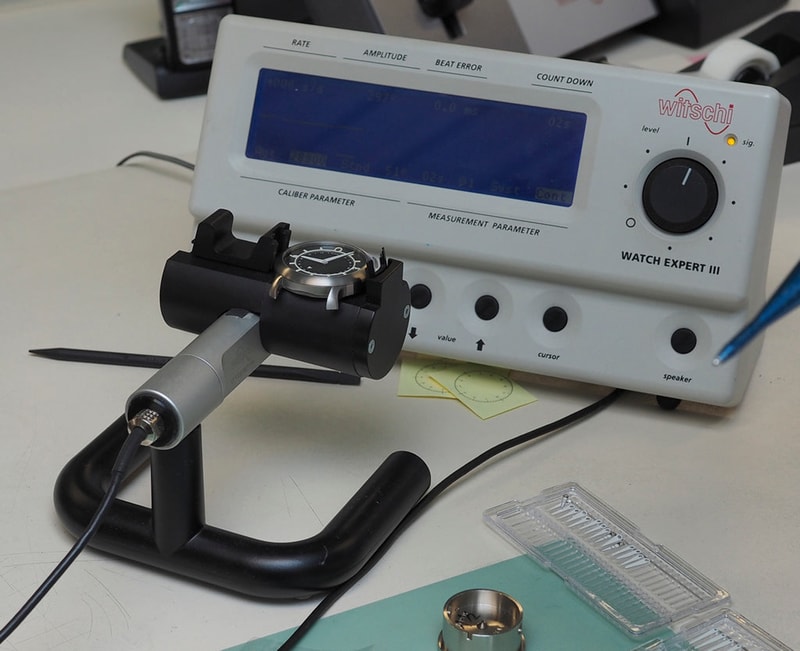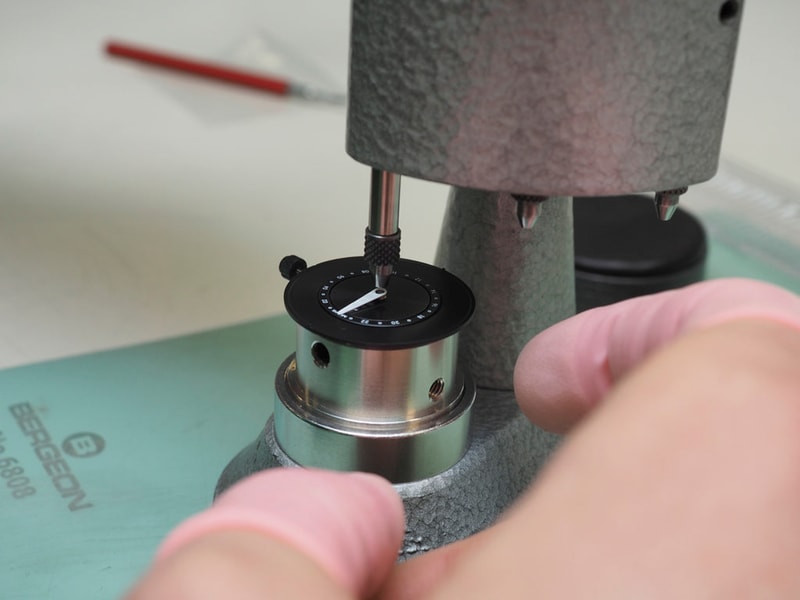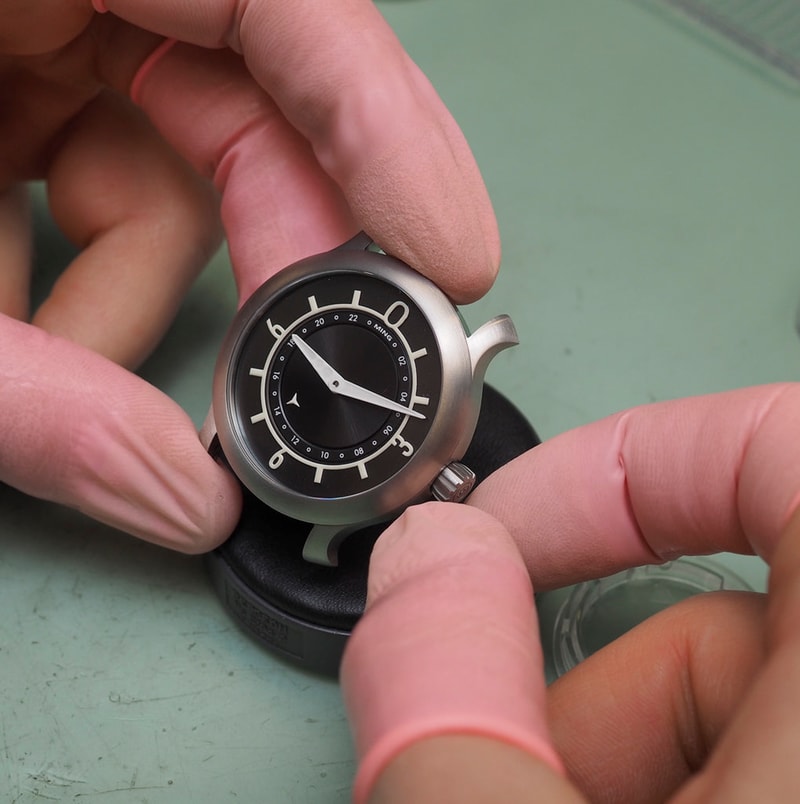In Part I, we looked at how all the various components are inspected and cleaned and how the dial is mounted on the movement. Let's now see how the remaining pieces come together to make the MING 17.03 as we know it.
Marrying movement and case - one step from the front, another from the back!
The 17.03 has a rigid, solid case construction which allows the movement to be directly mounted without the use of a spacer ring. However, this causes an additional complication for the watchmaker: the movement needs to be fitted from the front but secured from the back!
The watchmaker now aligns the movement perfectly vis-à-vis the crown tube and mounts the proprietary MING crown (note the triple gaskets on the crown stem - essential for the 100m water resistance).
Also, the placement of hands and dial elements must be checked again for any dislocations that might have occurred while the movement was put in the case.
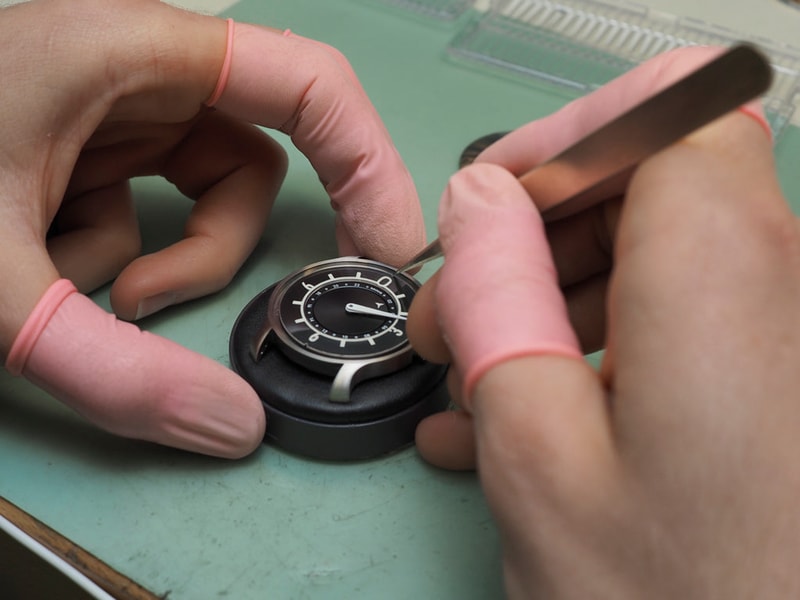
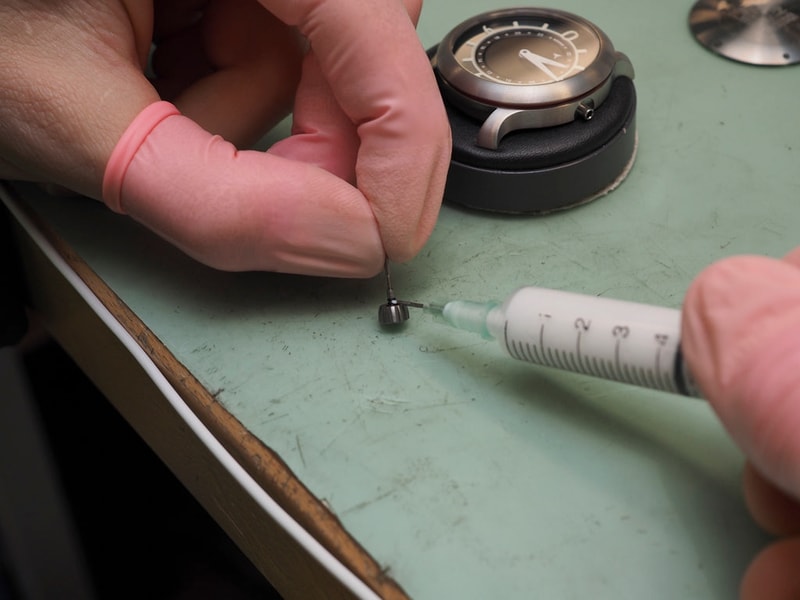
Once everything is aligned and good to go, the movement can be secured to the case with a so-called briden screw. This is a preferred alternative to a simple large screw, as the briden prevents the entire movement assembly from shifting position inside the case during tightening.
After a final check, the front bezel with the sapphire crystal can be added. (Note the red gasket!) A small table press is used to securely stamp the bezel to the case.

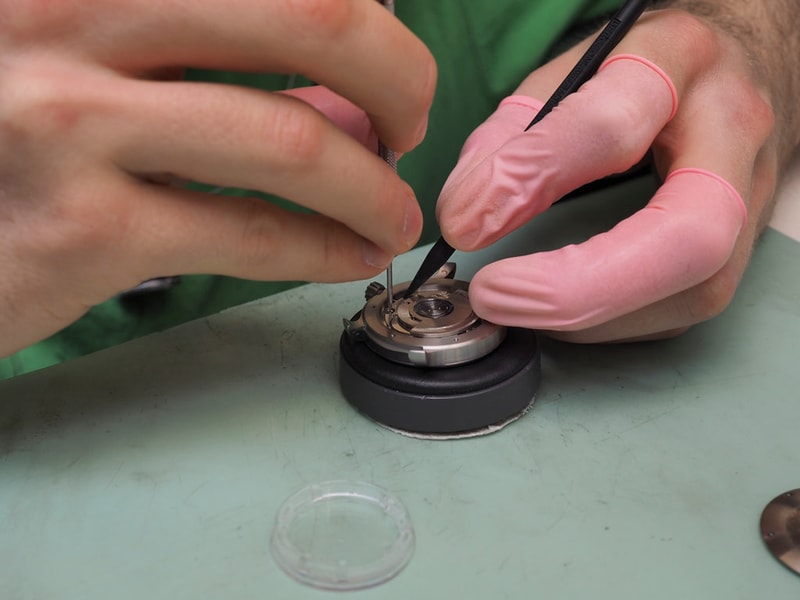
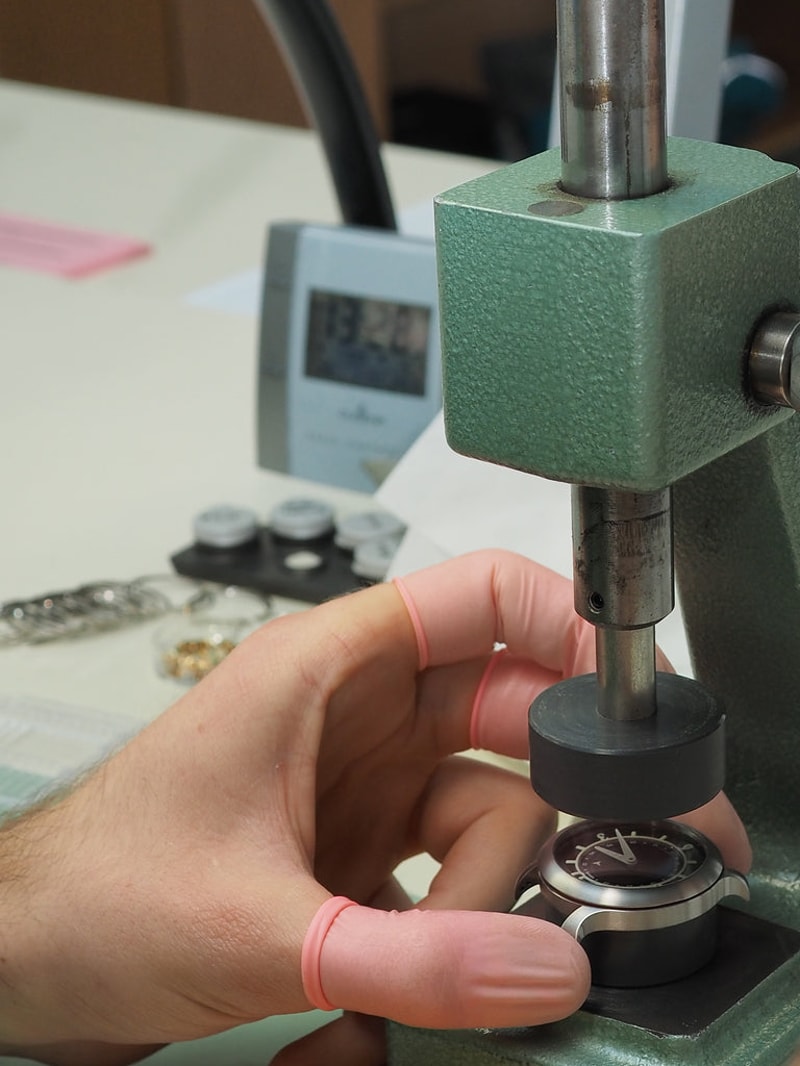
Before the case back is closed it is time to check the regulation of the watch. Sellita movements enjoy an excellent reputation amongst watchmakers for their ease of regulation and outstanding accuracy.
At MING, we specify our watches to be regulated according to the standards set by the Contrôle Officiel Suisse des Chronomètres (COSC), the official Swiss Chronometer testing institute, which is an average daily rate between −4/+6 seconds/day. This is an easy target for the Sellita to match. (Note: while we regulate our watches to COSC spec, they are not COSC certified since our watches lack the required seconds hand).
Once regulated and up to spec, the case can now be - quite literally - closed. Not only is the case machined from grade 2 titanium, but so are the screws. They are galvanised to prevent contact welding over time.
Quality? - Check!
Before we ship the watches to our customers, each 17.03 undergoes a strict quality control programme, which includes a thorough 250 hour timing check (50hr in each of the 5 positions) as well as a water tightness check. While each case is already checked for water resistance on receipt of the parts, we want to make doubly sure that the final piece, after assembly, remains correctly sealed.
The watchmakers use a time-intensive procedure that - for example - includes a settling-in round before the final tightness controls are performed. This round exposes each watch to a low pressure that allows the case parts and the gaskets to align properly.
Only then will the full test be run. So far, every case made for us has passed with flying colors!
Our MING 17.03 is now ready to be shipped to our head-office in Kuala Lumpur, where we perform a final, independent quality control check before we proudly send the watch out to its new owner.
We all learned something about the challenges of watchmaking that come with even a seemingly simple and essential watch such as our 17-series. We are happy to have competent and experienced partners who are able to guide us through the process!
- Dr. B
